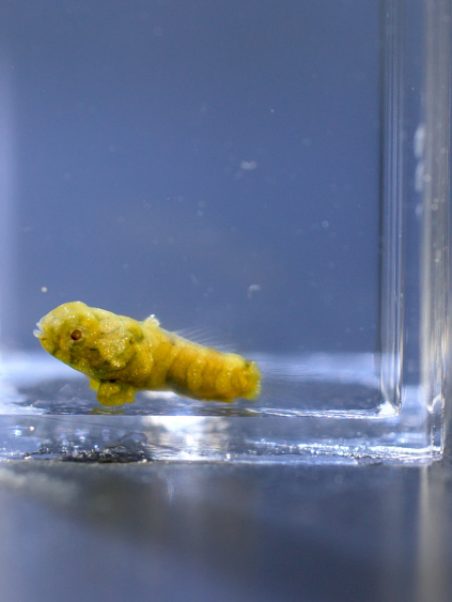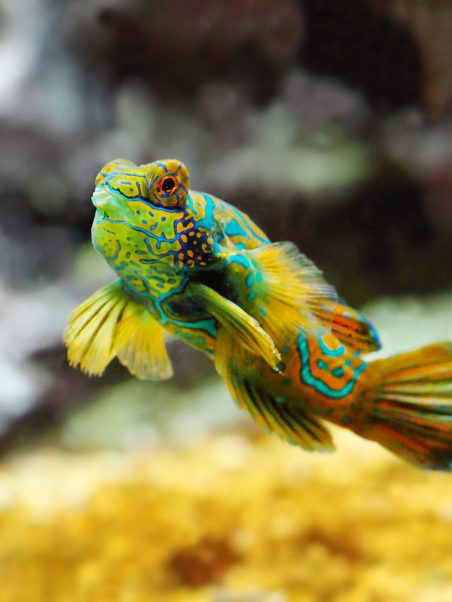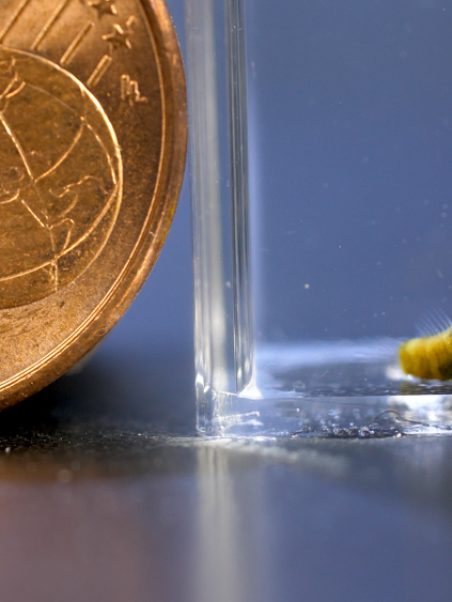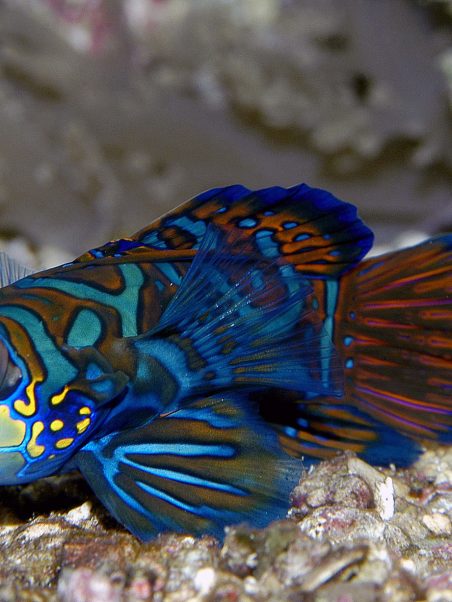Behind the scenes of reproduction
in the Museum's Nursery
- Home
- Actualités
- Reproduction: the Museum’s Nursery
REPRODUCTION OF SPECIES: the Oceanographic Museum's environmental approach
- A know-how acquired over the years
The Aquarium is renowned for its rich living ecosystems of the Mediterranean and tropical seas. The reproduction of marine species is another favourite area. And this is not new… In 1962, Doctor Garnaud, studying the reproduction of the Mediterranean apogon Apogon imberbis, was the first to demonstrate the fertilization of the female by the male using a non-specialized organ and to describe the larva which was unknown until then. In apogons, the female lays the eggs but it is the male who incubates them until the larvae hatch

World premiere: birth of Hatchet fish at the Museum
Our aquarium experts are pleased to announce the first aquarium birth of dwarf hatchetfish Parapriacanthus ransonneti
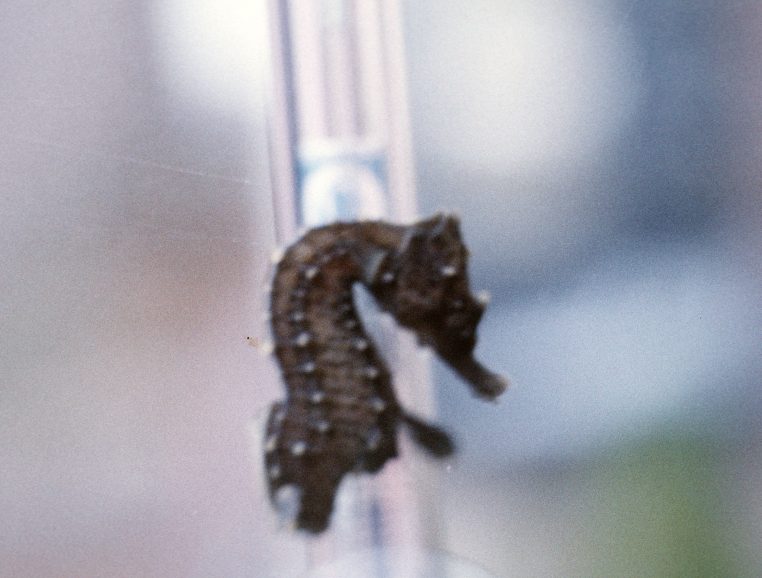
1986, the first seahorses
1986… The Aquarium team carries out the first breeding of the short-snouted seahorse Hippocampus hippocampus, a real feat as marine aquaculture technologies did not exist at the time! Today, several species of seahorses are raised in the Aquarium’s nursery. It is the male seahorse that raises the young in his pouch and releases them.
A well-filled pink booklet
Several dozen species have been reproduced and bred at the Aquarium, some of which are now routinely bred in the nursery to populate the Aquarium’s displays: seahorses, Banggai Island apogons, clownfish, spiny damselfish, small and large dogfish, hard and soft corals, cuttlefish, jellyfish, anemones, shrimp! Discovery of some emblematic species…
The Apogon of the Banggai Islands
The reproduction of the Banggai Islands apogon Pterapogon kauderni has been carried out at the Oceanographic Museum since 1996. In its native habitat, this endangered species, classified as “Endangered” by the International Union for Conservation of Nature, inhabits a small Indonesian archipelago.
The newborns remain in the male’s mouth for a few days after birth. About 10 mm long, they look like two drops of water to their parents. To protect themselves, they take refuge in corals, sea anemones or diadem urchins. The moment when the female transmits her eggs to the male, which is very rarely observed, has only been filmed once at the Aquarium, which makes the video an exceptional document.

The thorny damsel
The spiny damselfish Acanthochromis polyacanthus is the only species of marine fish to care for its young after they are born! The strain bred at the Aquarium comes from the Tokyo Aquarium in Japan.
Clownfish
Seven of the thirty species of clownfish found in tropical seas are bred at the Aquarium. Here, a Maldives clownfish Amphiprion nigripes takes care of its spawning.
Like their parents, young clownfish find protection in sea anemones.
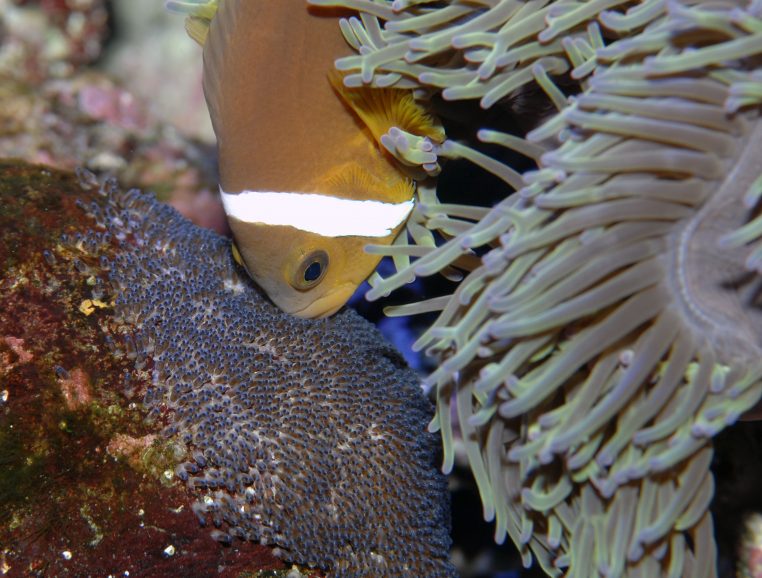

The royal gramma
The royal gramma Gramma loreto, a species prized by marine aquarists, lives in pairs within the coral reef of the Caribbean Sea. The first individuals were born at the Aquarium in 2007.
In the wild, this fish lays its eggs in a nest in the shelter of a rocky crevice. At the Aquarium, we offer him small tubes with a suitable diameter. The golden eyes of the embryos are clearly visible here.
After several months of breeding, the young royal grammas are ready to join the aquariums.
The golden damsel
The golden damselfly Amblyglyphidodon aureus from the western Pacific Ocean lays its eggs in a long ribbon on rocks or on the glass of the aquarium.
The barber shrimp
Lobster and shrimp are among the crustaceans born at the Aquarium. A true biological aid, the barber shrimp contributes to the balance of ecosystems by limiting the development of small “glass anemones” which can be invasive.
Jellyfish
The vast majority of the jellyfish presented at the Aquarium are born in a dedicated area. Among the species produced, the aurelian jellyfish Aurelia aurita, the spotted jellyfish Phyllorhiza punctata, the cassiopean jellyfish Cassopeia andromeda.

Cuttlefish
The cuttlefish Sepia officinalis, a cephalopod mollusc, lays its eggs in clusters on rocks or on fishermen’s traps. Cuttlefish reproduction takes place in the spring.
Corals
Hard and soft corals have been bred at the Aquarium since 1989, when the first aquarium with a live reef section from Djibouti was set up. Since then, most of the species have been reproduced, mainly by cuttings, the fragments being taken from a “mother” colony and then reared in dedicated tanks. Corals are animals, not plants. It is better to speak of “breeding” rather than “cultivation”. Other species of corals reproduce sexually by emitting young larvae that swim, settle on the substrate and then generate a colony, such as the magnificent coral Tubastrea aurea.
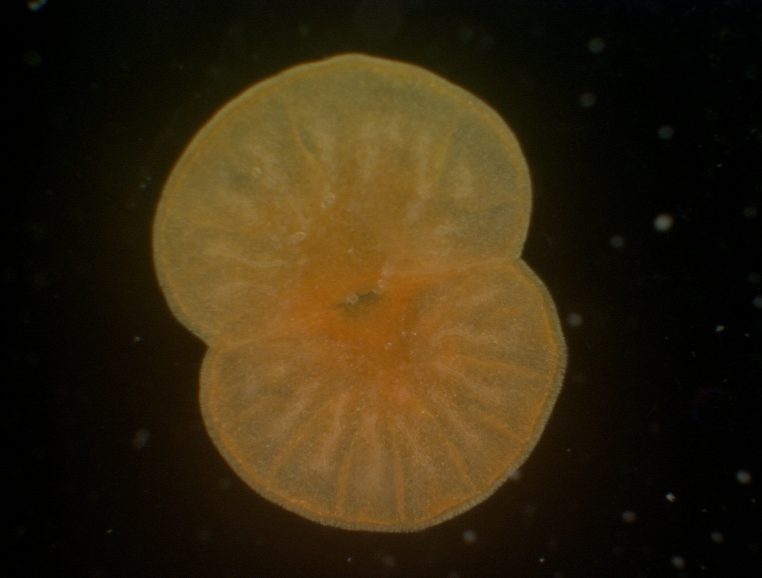
Corals in videos
LATEST SUCCESS TO DATE, the birth of mandarin fish!
Native to the western Pacific Ocean, Synchiropus splendidus is one of the prettiest coral reef fish and one of the most popular with marine aquarists. In the Aquarium’s nursery, one of the couples gave birth to several hundred 1 mm long larvae, no bigger than the tip of a pencil! Thirty days later, the juveniles reach 10 mm.
Networking
The Museum collaborates with partner establishments within the framework of the Union des Conservateurs d’Aquarium (UCA) in France and the EUAC (European Union of Aquarium Curators) in Europe.
The work is far-reaching. They deepen scientific knowledge on the biology and reproduction of species that are often poorly known and sometimes endangered, such as the Banggai Islands apogon or the guitar rays. They allow us to have a large number of specimens, very well adapted to life in an aquarium, thus limiting the number of specimens taken from the natural environment.
There are many exchanges between aquariums, thus avoiding long, time-consuming transports that emit greenhouse gases. This is an important part of the Oceanographic Museum’s environmental approach.
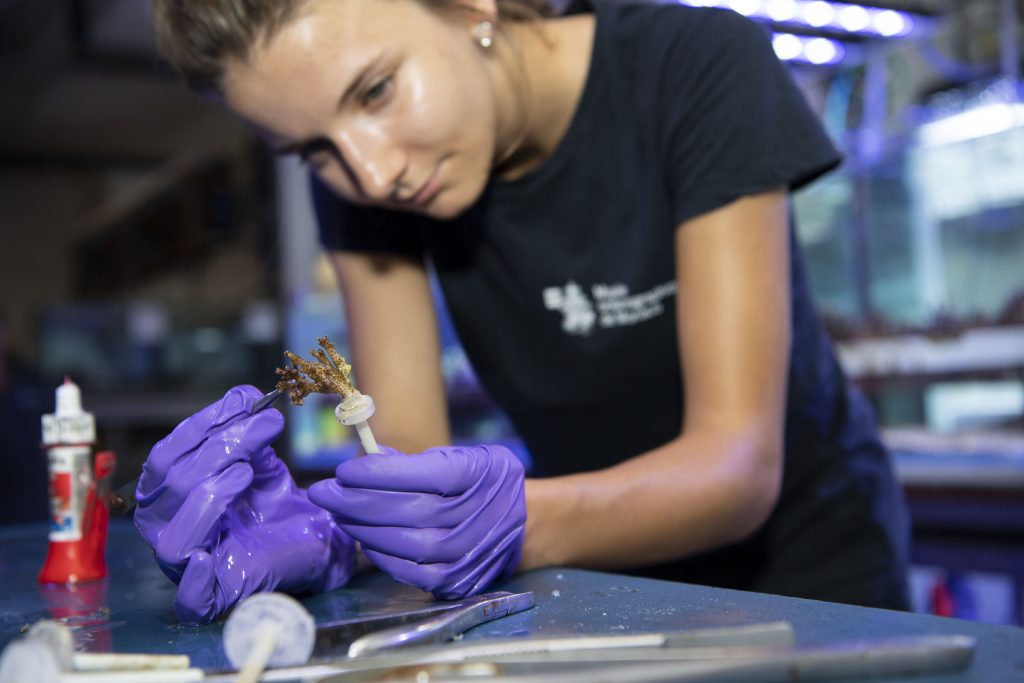
Rigorous techniques
The reproduction of fish and invertebrates requires a real know-how and rigorous techniques derived largely from modern aquaculture methods, a solid knowledge of biology and a real talent for observation! Conditions to be met:
- Optimal water quality
- Precise current and light conditions
- Substrates adapted to the different species (the natural biotopes of the Aquarium are perfectly suitable)
- Food that meets the nutritional needs of the parents and the juveniles, in quality and quantity
- 24/7 monitoring of installations
- The immense patience of the aquariological technicians to form schools or couples, to observe the behaviour of the parents and to pamper the juveniles!
Discover the Aquarium's nursery during a Premium visit
The visit of the nursery is possible within the framework of the visit JUST FOR YOU… THE BACKSTAGE OF THE MUSEUMAn unforgettable Premium moment, organised on demand and made to measure, to be found in our brochure or on contact.







